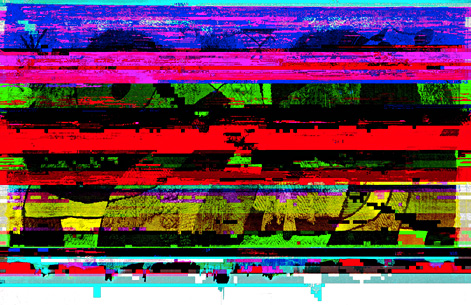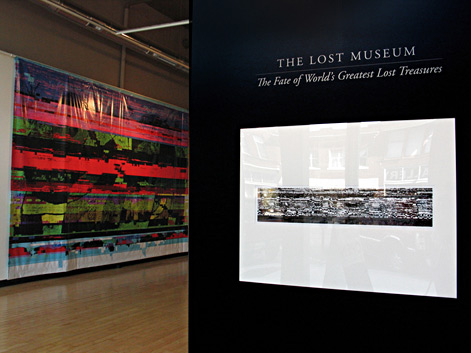



Shaurya Kumar
"The Lost Museum"
The Fate of the World's Greatest Lost Treasures
September 11 - Oct 4, 2008
Reception September 11, 7-9pm

World Trade Center Tapestry by Joan Miro
20th century | 20' x 35'
Second World Trade Center | New York, U.S.A.
DESTROYED ON SEPTEMBER 11, 2001
12' x 18'
Digital Print on Outdoor Vinyl
2007
It is said the shape of our culture is very much defi ned by the art of that
particular era; that the art and culture are the alter egos of one another.
An artwork hence embodies a past, a history in itself. Loss of any art is
thus a loss of history, a loss of the spirit of time.
Though there was always a realization of importance of documentation,
there are particular reasons, especially in the art realm, for work to be
completely erased from human memory, once it is lost or destroyed.
As saying goes - once something is out of sight, it is out of mind.
Despite all the eff orts to preserve art, since time immemorial, numerous
works of art have been destroyed either during a military coup, or when the
ruling regime is in general disagreement with the philosophy of that work
itself. In the past century, however, with the advent of technology, there
has been a major drive to preserve and learn more about the past than ever
before. Robert Adams in his book The Lost Museum says —“We know the past better than the past knew itself”. Through the invention of camera, video films, photo copiers & fax, art was granted an immortal youth. It seemed that art and history had finally found a guardian.
The early 1980s witnessed another uproar, a great effort to preserve art,
history and vanishing cultures, this time using the advanced and highly
sophisticated modern technology. In 1982, a number of museums around
the world joined hands to form The Council for Documentation of Lost Art
& Cultural Heritage (CDLACH), with the primary aim to document and
preserve a record of artworks that had been lost or destroyed. Much of the
existing documentation was converted into electronic database, forming the
largest electronic archive of lost art and culture to date.

The documentation was completed and forgotten, with a belief that it
would available for all times to come. However, only about two and a half
decades after the archive was created, much of the database was found to be
inaccessible. While some of electronic fi les didn’t even open, many had
changed beyond recognition. “They looked like parts of the old Atari
video games, or images that you can see when one tries to open an old CD
or a floppy disk” says the head engineer who was rushed to the site after the
error was fi rst reported.
This exhibition is a part of the collection of artworks that were found
corrupted and stands as an aftermath of the ‘final loss’ for even the
documentation of lost art has been lost forever. In response to this crisis
and in an attempt to freeze the digital relics without any delay, the CDLACH
is now in the process of reproducing their digital archive on paper.
The works showcased here are from a collection of the art and cultural artifacts that were lost or destroyed during conflict situations or wars throughout history.
The council has also initiated a Program for Conservation of Art in Electronic
Media (PCAEM) with an aim to retrieve and preserve any possible
information from the archive.
This site and its entire contents © 2004-2008 Los Angeles Center For Digital Art
All Rights Reserved.
Works of individual artists remain the intellectual property and are copyrighted by their respective authors. No unauthorized reproduction, all rights reserved.
|
|

